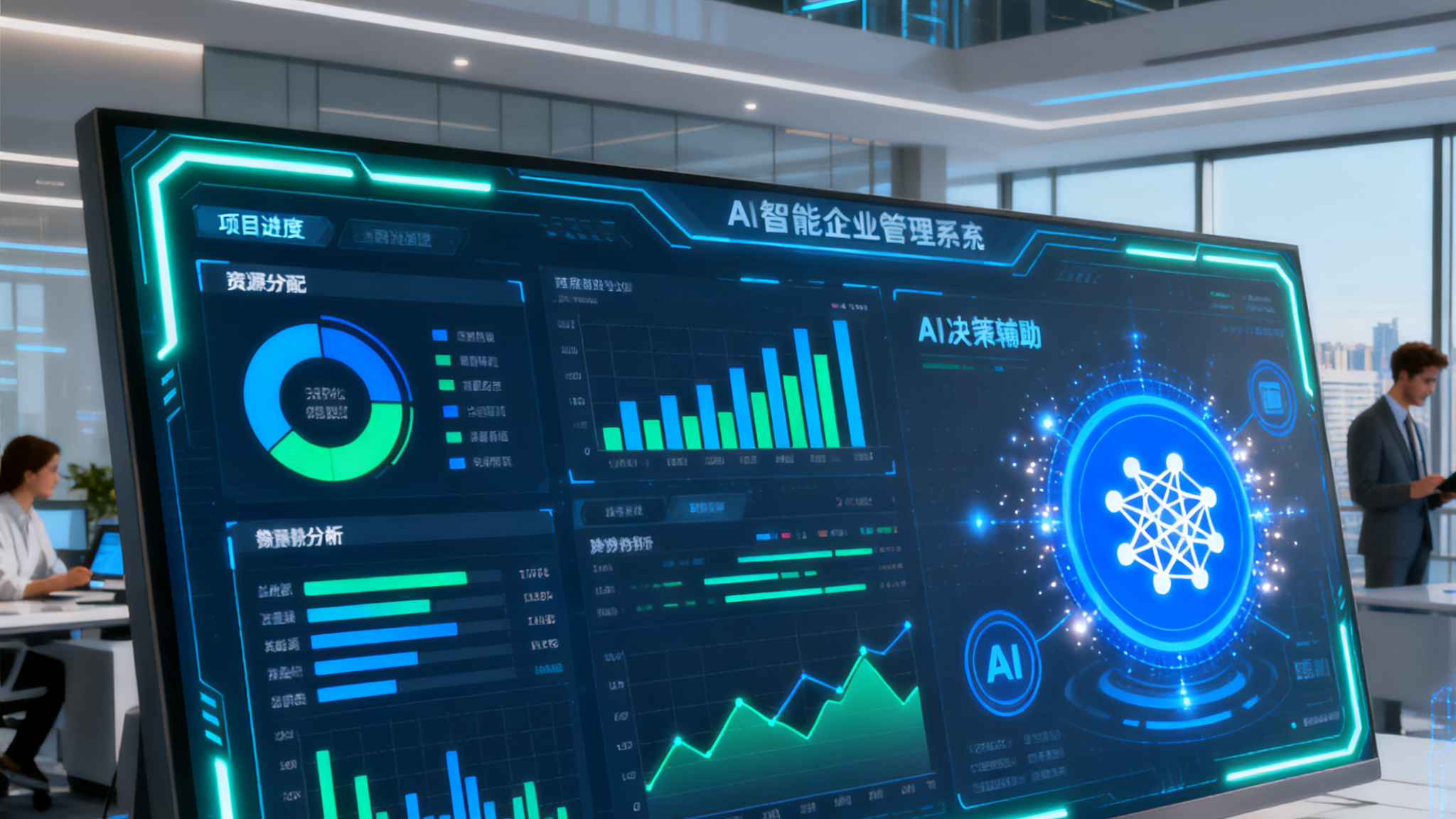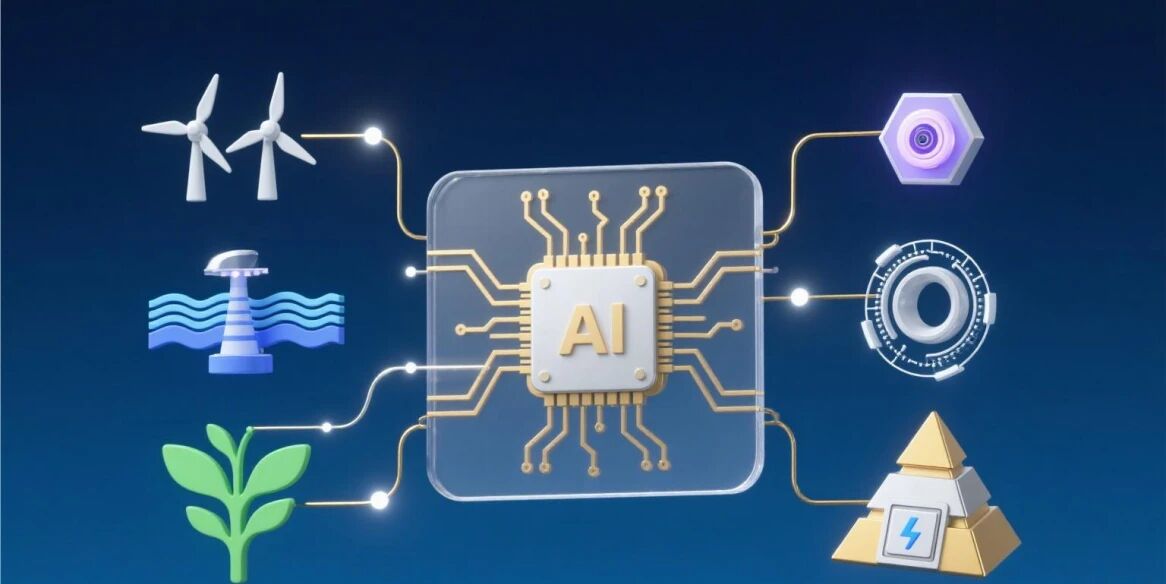

At this pivotal juncture in the global energy transition towards sustainability, the new energy sector has emerged as the central driver of this transformation. Concurrently, breakthroughs in artificial intelligence (AI) technology have injected unprecedented innovative momentum into the new energy industry. From a policy perspective, the State Council's "Opinions on Deepening the Implementation of the 'AI+' Initiative" (State Council Document [2025] No. 11) and the National Development and Reform Commission's "Implementation Opinions on Promoting High-Quality Development of 'AI+' Energy" (National Energy Administration Document [2025] No. 73) explicitly designate the new energy sector as a priority domain for AI empowerment. This policy orientation not only aligns closely with the United Nations' Sustainable Development Goal 7 on ensuring access to affordable, reliable, sustainable and modern energy, but also establishes a synergistic framework linking international objectives, domestic policies and technological implementation.

China has achieved significant practical results in the new energy sector. By the end of July 2025, the nation's installed capacity for wind and solar power generation reached 1.206 billion kilowatts, exceeding the 2030 installed capacity target by more than six years in advance. Nevertheless, persistent industry challenges—including unstable energy generation, inefficient distribution, and high operational and maintenance costs—continue to constrain the sector's large-scale upgrading. Against this backdrop, AI technology emerges as pivotal to resolving these challenges through core capabilities such as big data forecasting and intelligent operations and maintenance. It can alleviate energy generation and distribution difficulties via precise resource allocation while reducing operational costs through real-time equipment monitoring. Its enabling value has become the core driver propelling the new energy sector towards greater efficiency and intelligence, offering a referenceable technological pathway for global energy transition.
AI Optimizes Energy Production
Overcoming Intermittency Challenges
Renewable energy generation, particularly solar and wind power, is significantly influenced by natural conditions. The intermittent and fluctuating nature of this generation poses substantial challenges to the stability of electricity supply. AI technology, with its robust data processing capabilities and precise predictive analytics, has emerged as an effective means to enhance the stability and predictability of renewable energy generation. The "Kuang Ming" large model released by State Power Rixin integrates meteorological data with historical output data from renewable energy sites to accurately forecast wind and solar power generation. In practical applications, this model has elevated photovoltaic power prediction accuracy to over 90%, providing reliable decision-making support for grid dispatch.

AI also plays a vital role in the operation and maintenance of renewable energy equipment. Datang International Power Generation has utilized AI algorithms to automate inspections of wind turbine blades and photovoltaic modules, achieving a fault identification accuracy rate of 98% and tripling operational efficiency. By continuously monitoring equipment operational status and analyzing vast datasets through machine learning algorithms, AI technology enables precise, advance prediction of equipment failures. This transforms reactive maintenance into proactive upkeep, effectively reducing equipment failure rates, extending operational lifespans, and substantially cutting maintenance costs.
AI Upgrades Energy Dispatch
Driving the Intelligent Transformation of Power Grids
Traditional grids relied on human expertise for dispatch and maintenance, proving inadequate for the complex, dynamic operational scenarios arising from large-scale renewable integration. The integration of AI propels grids towards intelligent, "observable, measurable, and controllable" operations. The "Source-Grid-Load-Storage-Charging" intelligent control platform developed by China Southern Power Grid employs AI algorithms to analyze grid power flows, load fluctuations, and equipment status in real time, achieving millisecond-level response times. This robustly supports the stable operation of grids where renewable energy accounts for over 60% of the load. At the distribution grid level, AI technology can precisely pinpoint issues such as low voltage and heavy overloads, guiding maintenance personnel to implement targeted remediation measures. This has reduced transformer district line loss rates by over 5%.

Virtual power plants, emerging as novel AI-driven business models, demonstrate immense potential. Shenzhen's virtual power plant platform aggregates dispersed resources like distributed photovoltaic and charging points, utilizing AI algorithms to optimize load scheduling with a total regulation capacity exceeding 3 million kilowatts. This innovative approach not only significantly enhances grid flexibility and resilience but also enables user participation in electricity markets, propelling the energy sector towards greater democratization and efficiency.
AI Deeply Embedded in Energy Management
Comprehensive Enhancement of Operational Efficiency
Within the daily management of new energy enterprises, AI technology assists in optimizing operations across multiple dimensions. Goldwind employs AI large models to analyze equipment operational data, optimize maintenance strategies, reduce power outage risks, and extend equipment lifespan by over 20%, effectively ensuring continuous and stable energy production. Concurrently, AI-based HVAC systems in buildings learn user behavior and environmental data to automatically regulate temperature and airflow, reducing building energy consumption by 30% and achieving high-efficiency energy savings at the consumption end.

Within the power sector, AI technology significantly reduces fossil fuel consumption by optimizing generation portfolios and grid operations. Data from the National Development and Reform Commission indicates that AI-driven power dispatch systems can decrease coal-fired power plant start-stop cycles by 30% and cut carbon emissions by 15%. Furthermore, the integration of AI with block chain technology enables precise carbon footprint tracking, providing scientifically sound technical support for corporate carbon asset management and facilitating steady progress towards low-carbon transformation.
Policy Direction
Phased Development Goals
Clear policy direction provides a defined pathway and robust safeguards for the integration of AI technology with the new energy sector. At the national strategic level, two core phased objectives have been established for the convergent development of energy and artificial intelligence: by 2027, an integrated innovation system will be preliminarily established, laying solid foundations for computing-power synergy and achieving breakthroughs in core technologies. This will be accomplished by promoting the application of over five specialized large models across power grids, power generation, coal, oil and gas sectors, identifying over 10 key demonstration projects, exploring 100 typical application scenarios, and concurrently refining 100 technical standards. Cultivating innovation platforms, developing multidisciplinary talent, and establishing financial support systems will ultimately forge an innovation model suited to China's national conditions, yielding initial tangible outcomes in energy intelligence. By 2030, achieve world-leading levels in specialized AI technologies and applications within the energy sector. Further refine the computing-power coordination mechanism to establish a green, economical, secure, and efficient computing energy consumption model. Achieve significant breakthroughs in theoretical and technological innovation, cross-domain, cross-industry, and cross-scenario empowerment, intelligent power regulation, and intelligent energy resource exploration. Realize tangible outcomes in self-intelligent and scientific intelligence implementation. Concurrently, globally leading R&D platforms and talent bases will be established, alongside a refined policy framework, laying a robust foundation for high-quality energy development.

Development Challenges and Response Strategies
Despite the promising prospects for AI applications in the new energy sector, its development has not been without challenges. Data quality issues are paramount, as the new energy industry involves diverse data sources and formats, making it difficult to ensure the accuracy, completeness, and consistency of data. This impacts the training effectiveness and predictive accuracy of AI models. Computing power costs present another major challenge. AI algorithms demand substantial computational resources, particularly when processing large-scale renewable energy datasets. The high cost of computing power constrains the large-scale deployment of AI technology. Furthermore, insufficient algorithmic explainability undermines trust in AI decision-making within critical scenarios.

Addressing these challenges necessitates multi-stakeholder collaboration. On one hand, interdisciplinary cooperation must be strengthened by bringing together experts from computer science, energy engineering, statistics and other fields to jointly develop AI technologies tailored for the new energy sector. This will drive the independent research, development and standardization of large-scale power models. Concurrently, policy frameworks must refine data-sharing mechanisms to dismantle data silos, channel social capital into AI-new energy convergence, reduce computational costs, and accelerate technological innovation and deployment. Research into AI explainability should also be intensified to enhance the transparency and credibility of AI decision-making.
The deep integration of AI technology with the new energy industry is reshaping the global energy landscape, providing robust technical support for achieving a clean, low-carbon, and sustainable energy future. From energy production and dispatch to management, AI's enabling effects are progressively manifesting, driving efficiency gains, cost reductions, and model innovation. Despite numerous challenges, with continuous technological advancement and refinement, AI will undoubtedly play an increasingly significant role in the new energy sector, guiding humanity towards a greener, smarter energy era.